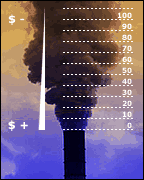Society’s preoccupation with climate change and environmental damage caused by the acts of man extends beyond the specialists in that area. It has affected another sector – financial markets. Citing the need to act quickly to avoid the dangerous degradation of our planet, financial specialists have created a market in so-called “carbon gases.” With the upcoming adoption of the Kyoto Protocol, whose aim is to protect the planet by establishing goals to reduce the emission of contaminating gases, developed countries will be able to purchase credits for pollution reduction from other companies and countries, and thus be able to reduce their own goals. When the Kyoto Protocol goes into effect in 2008, analysts predict that this marketplace will raise about $100 billion.

Sign up to stay informed about our latest article releases.